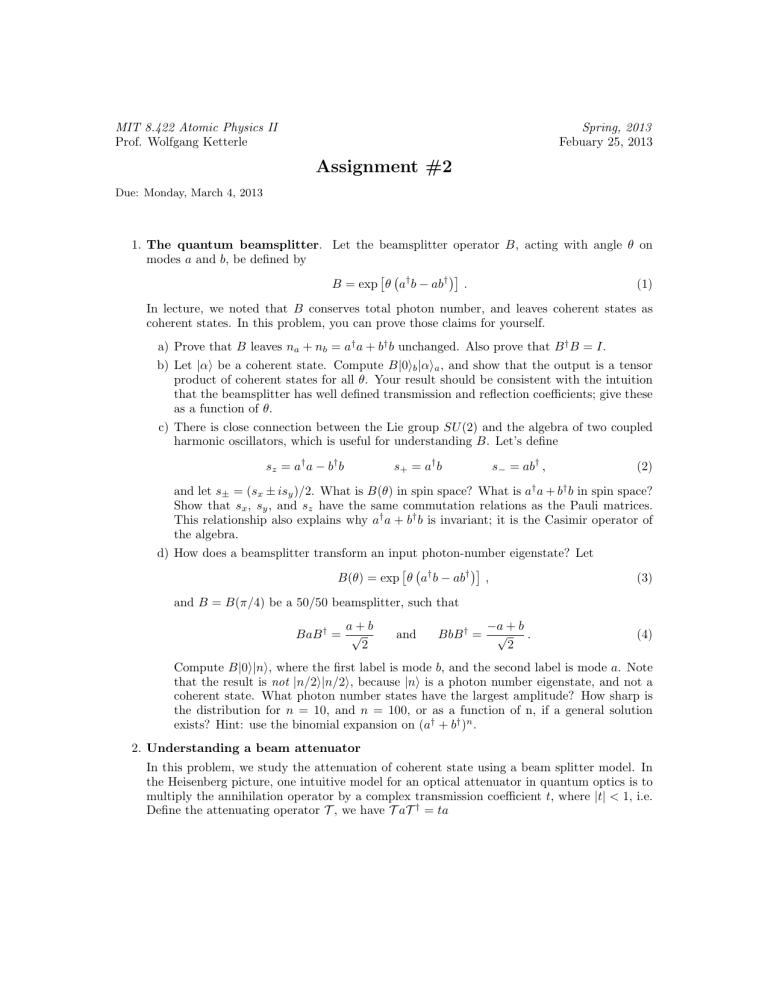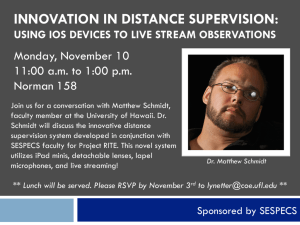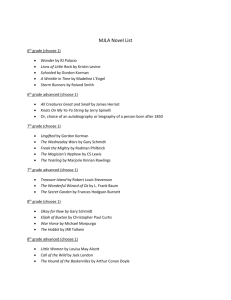Assignment #2

MIT 8.422
Atomic Physics II
Prof.
Wolfgang Ketterle
Due: Monday, March 4, 2013
Assignment #2
Spring, 2013
Febuary 25, 2013
1.
The quantum beamsplitter .
Let the beamsplitter operator B , acting with angle θ on modes a and b , be defined by
B = exp θ a
† b − ab
†
.
(1)
In lecture, we noted that B conserves total photon number, and leaves coherent states as coherent states.
In this problem, you can prove those claims for yourself.
a) Prove that B leaves n a
+ n b
= a a + b
† b unchanged.
Also prove that B
†
B = I .
b) Let | α ) be a coherent state.
Compute B | 0 ) b
| α ) a
, and show that the output is a tensor product of coherent states for all θ .
Your result should be consistent with the intuition that the beamsplitter has well defined transmission and reflection coefficients; give these as a function of θ .
c) There is close connection between the Lie group SU (2) and the algebra of two coupled harmonic oscillators, which is useful for understanding B .
Let’s define s z
= a a − b
† b s
+
= a
† b s
−
= ab
†
, (2) and let s
±
= ( s x
± is y
) / 2.
What is B ( θ ) in spin space?
What is a a + b
† b in spin space?
Show that s x
, s y
, and s z have the same commutation
This relationship also explains why a a + b
† b is relations invariant; it is as the the Pauli
Casimir matrices.
operator of the algebra.
d) How does a beamsplitter transform an input photon-number eigenstate?
Let
B ( θ ) = exp θ a
† b − ab
†
, (3) and B = B ( π/ 4) be a 50/50 beamsplitter, such that
BaB
† a + b
= √
2 and BbB
†
− a + b
= √ .
2
(4)
Compute B | 0 )| n ) , where the first label is mode b , and the second label is mode a .
Note that the result is not | n/ 2 )| n/ 2 ) , because | n ) is a photon number eigenstate, and not a coherent state.
What photon number states have the largest amplitude?
How sharp is the distribution for n = 10, and n = 100, or as a function of n, if a general solution exists?
Hint: use the binomial expansion on ( a
†
+ b
†
) n .
2.
Understanding a beam attenuator
In this problem, we study the attenuation of coherent state using a beam splitter model.
In the Heisenberg picture, one intuitive model for an optical attenuator in quantum optics is to multiply the annihilation operator by a complex transmission coefficient t , where | t | < 1, i.e.
Define the attenuating operator T , we have T a T †
= ta
2 a) Show that for the attenuating operator defined above, a coherent state will have its photon number fluctuation below shot noise.
i.e.
for the unattenuated state | α ) , with n n
2
= | α | 2
, the attenuated state would have n
' | t | 2 | α | 2
, and Δ n
' 2
= | t | 4 | α | 2
, which violates the minimum uncertainty.
b) We now see that this most intuitive definition does not give a physical result for an atten uated coherent state.
In fact, it’s not a unitary transformation and does not correspond to quantum time evolution.
One correct model instead, is to formulate attenuation as photons going through a beam splitter, where the attenuating part is still given by a transmission scaling factor t , but from the other port of the beam splitter, a vacuum state mixes in with a reflection which has a reflection scaling factor r , with | r | 2
+ | t | 2
= 1.
Show that with this beam splitter model, the photon number fluctuation of a coherent state, after attenuation, still follows shot noise.
Argue using result from 1(a), that a coherent state will always be transmitted as an attenuated coherent state.
This problem shows that any kind of attenuation (e.g.
dissipation) couples the quantum system to an open port which allows vacuum fluctuations to enter.
Any kind of dissipation adds fluctuations to the attenuated quantum state.
3.
The Schmidt measure of pure state entanglement
We will talk soon in class about entanglements, but this problem can already be addressed without special knowledge.
Entanglement is a property of a composite quantum system that cannot be changed by local operations and classical communications.
How do we mathematically determine if a given state is entangled or not?
And if a state is entangled, how entangled is it?
In this problem, we explore a measure of bi-partite entanglement known as the Schmidt number , which is particularly easy to compute.
This is based on the Schmidt decomposition, which, for a pure state | ψ ) in the Hilbert space of systems A and B , is the expression of | ψ ) in the form
| ψ ) = λ k
| k
A
)| k
B
) , k
(5) where | k
A
) and | k
B
) are orthonormal states of systems A and B , respectively, and λ
2 k k
= 1.
Note that this is essentially just a singular value decomposition.
The Schmidt number is defined as the number of nonzero λ k
.
a) Prove that | ψ ) is a product state, that is | ψ ) = | ψ
A
)| ψ
B
) , for some states | ψ
A
) and | ψ
B
) of systems A and B , if and only if the Schmidt number of | ψ ) is 1.
b) Prove that the Schmidt number cannot be changed by local unitary transforms.
It turns out that even with any amount of additional classical communication, the Schmidt number still cannot be changed.
Because this number is invariant under “local operations and classical communication,” it is a measure of entanglement.
3 c) Give the Schmidt numbers for each of the following states:
|
| φ
φ
1
4
)
)
=
=
| 00 ) + | 11 ) + | 22 )
3
| 00 ) + | 01 ) + | 10 ) + | 11 )
| φ
2
) =
| φ
3
) =
2
| 00 ) + | 01 ) + | 10 ) − | 11 )
2
| 00 ) + | 01 ) + | 11 )
√
3
.
(6)
(7)
(8)
(9) d) From the lecture, it would seem to follow that the more entangled a state you have
(eg the higher Schmidt number a state has), the better you can do with interferometric measurements.
Later in the class, we will encounter the Yurke state as an input state of interferometers which gives a precision higher than the standard shot noise limit.
What is the Schmidt number of the Yurke state, | ψ ) = ( | n )| n − 1 ) + | n − 1 )| n ) ) / 2?
What is the Schmidt number of the state after the Yurke state is transformed by a 50/50 beamsplitter B ,
| φ
1
) = B | ψ ) ?
Explain why this is a better measure for ”how entangled” the interferom eter is.
What is the Schmidt number of the state given by feeding a coherent state | α ) and vacuum | 0 ) into B , i.e.
| ψ
1
) = B | α )| 0 ) ?
e) Often, the Schmidt number can lack meaning as a quantitative measure of entanglement, because it includes even the smallest non-zero coefficients in its count.
One improvement on this is to count only coefficients above a certain threshold, as illustrated by the following example.
A two-mode squeezed state can be generated in the laboratory by a certain kind of optical parameteric oscillator; suppose this is the state r
| Ψ ) = exp − ( a
2
1 a
2
− a
† †
1 a
2
) | 0 )
1
| 0 )
2
1
∝ cosh r
X n tanh n r | n )
1
| n )
2
.
(10)
Plot the number of Schmidt coefficients of | Ψ ) which are above a fixed threshold, say
0 .
01, as a function of the squeezing parameter r .
Show that this measure of entanglement increases with increasing r , as intuitively desired.
MIT OpenCourseWare http://ocw.mit.edu
8.422 Atomic and Optical Physics II
Spring 2013
For information about citing these materials or our Terms of Use, visit: http://ocw.mit.edu/terms .





